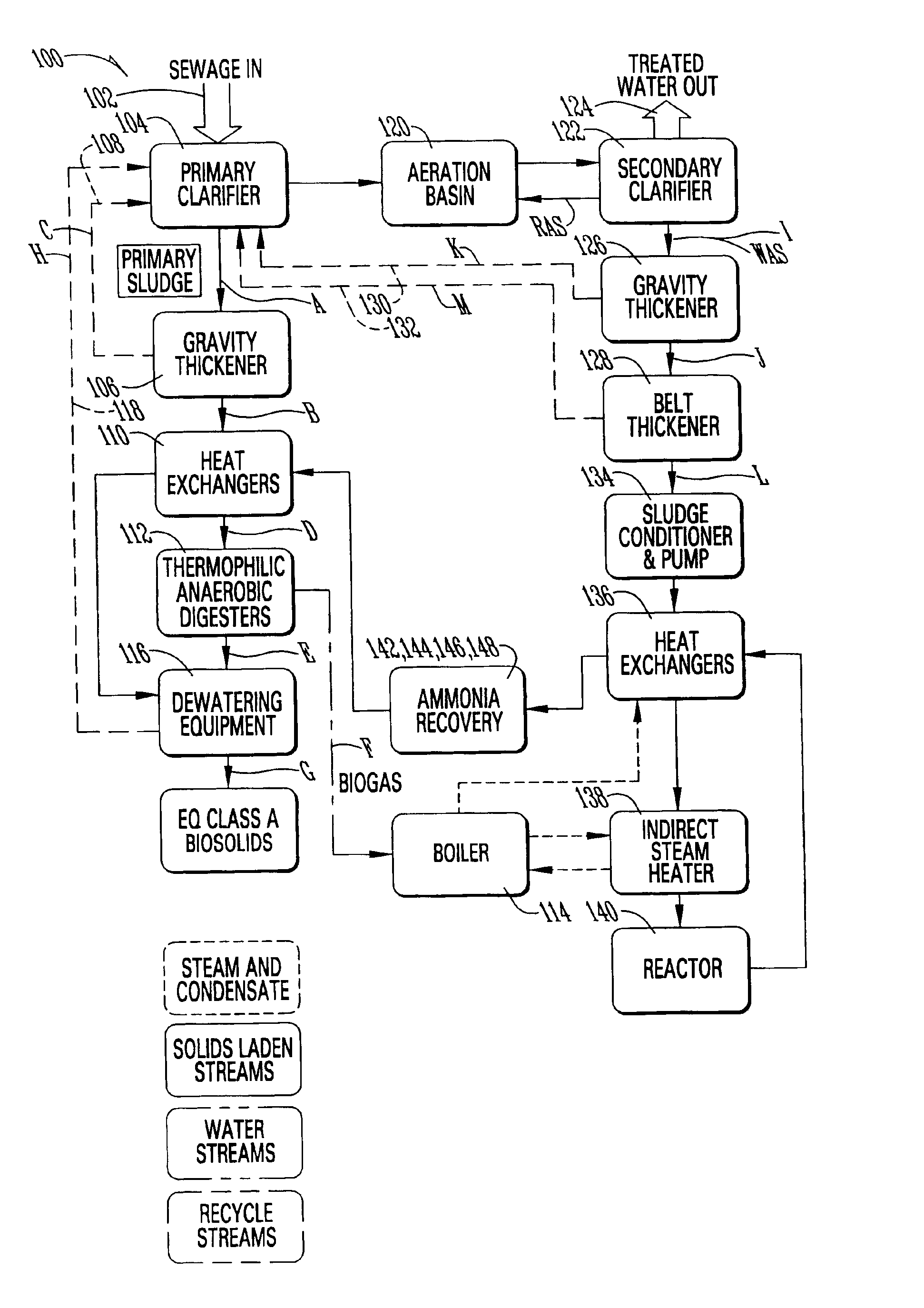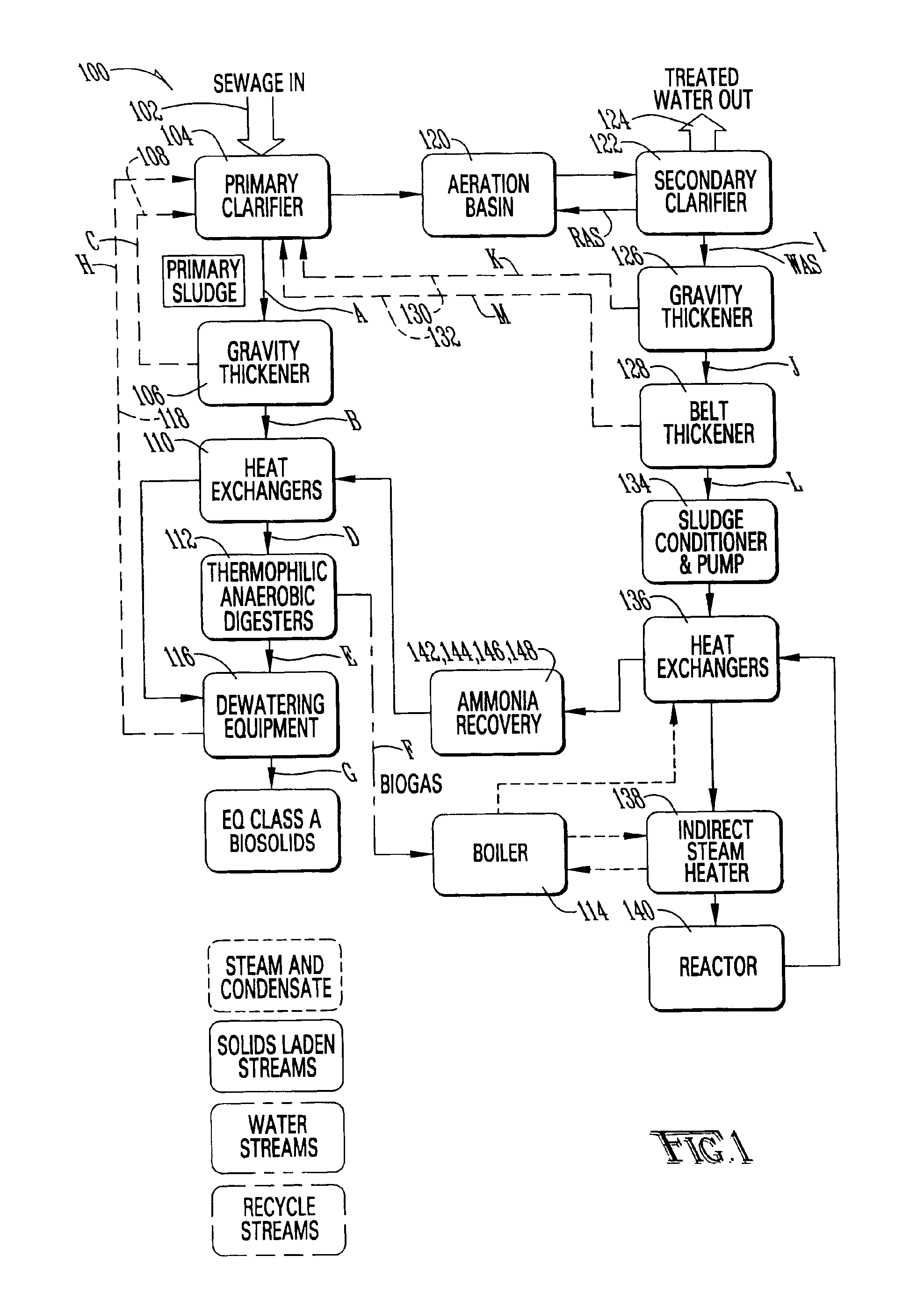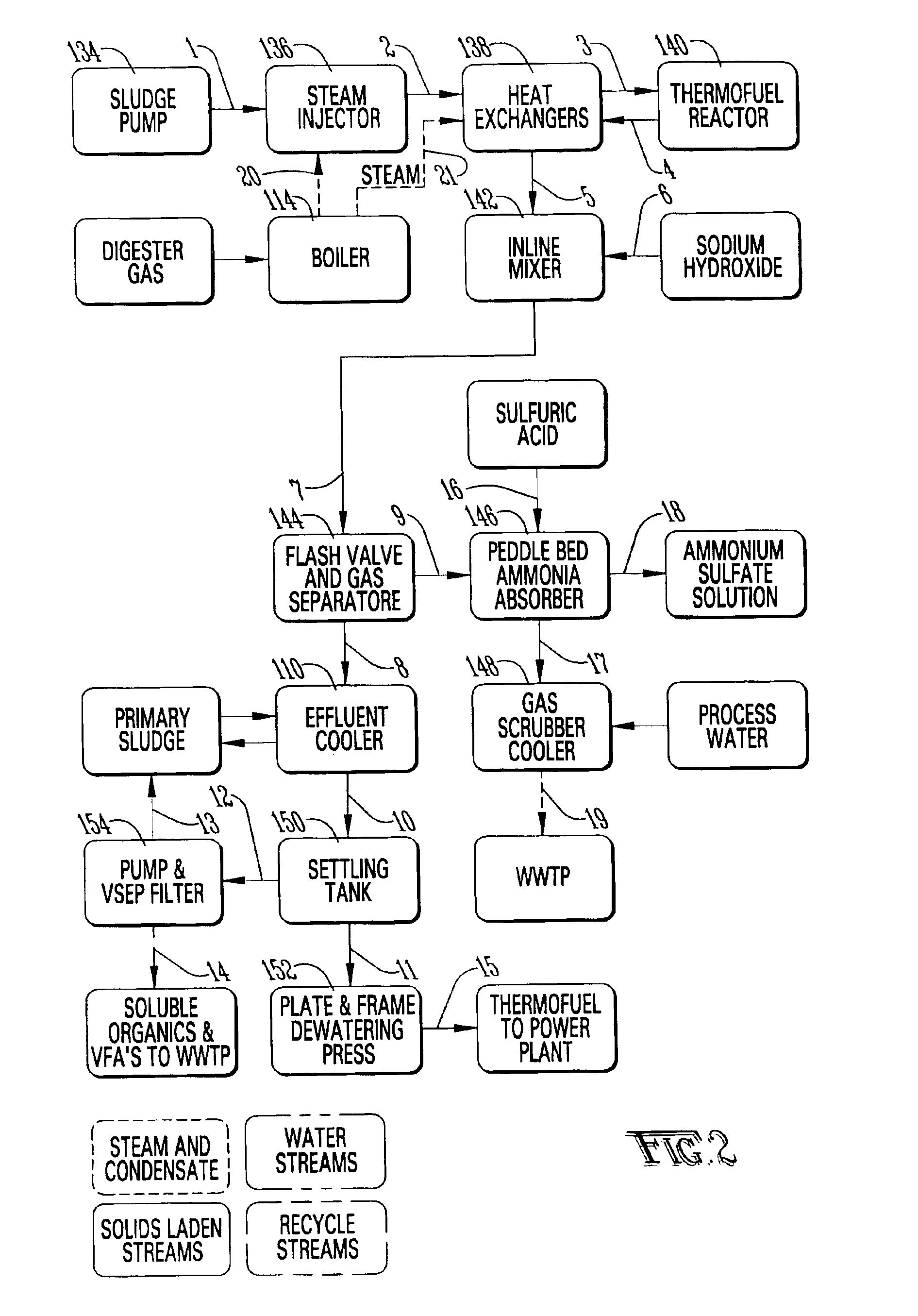Sewage treatment system
a sewage treatment system and sewage technology, applied in biological water/sewage treatment, multi-stage water/sewage treatment, water/sewage treatment by degassing, etc., can solve the problems of large energy demand for heating the feed of anaerobic digesters, difficult dewatering and digesting of waste activated sludge, etc., and achieve low capital and operating costs.
- Summary
- Abstract
- Description
- Claims
- Application Information
AI Technical Summary
Benefits of technology
Problems solved by technology
Method used
Image
Examples
Embodiment Construction
[0026]Referring to FIG. 1, the reference numeral 100 refers in general to a system of the present invention. According to the present invention, an aqueous waste stream 102, such as raw sewage, wastewater, or the like is first subjected to pretreatment using equipment such as a bar screen and grit chamber (not shown) for removing much of the larger particulate matter. The pretreated waste stream 102 passes to a primary clarifier 104 where it is separated into a primary sludge, containing the bulk of the readily settleable material and a water effluent containing dissolved and suspended material. Pound for pound, the primary sludge will have most of the chemical energy of the waste stream. The water effluent will have significantly more nitrogen, approximately twice as much as the primary sludge.
[0027]The primary sludge is then passed to a gravity thickener 106 to remove some of the water. The primary sludge typically dewaters or thickens relatively easily to approximately 5%-9% soli...
PUM
 Login to View More
Login to View More Abstract
Description
Claims
Application Information
 Login to View More
Login to View More - R&D
- Intellectual Property
- Life Sciences
- Materials
- Tech Scout
- Unparalleled Data Quality
- Higher Quality Content
- 60% Fewer Hallucinations
Browse by: Latest US Patents, China's latest patents, Technical Efficacy Thesaurus, Application Domain, Technology Topic, Popular Technical Reports.
© 2025 PatSnap. All rights reserved.Legal|Privacy policy|Modern Slavery Act Transparency Statement|Sitemap|About US| Contact US: help@patsnap.com



